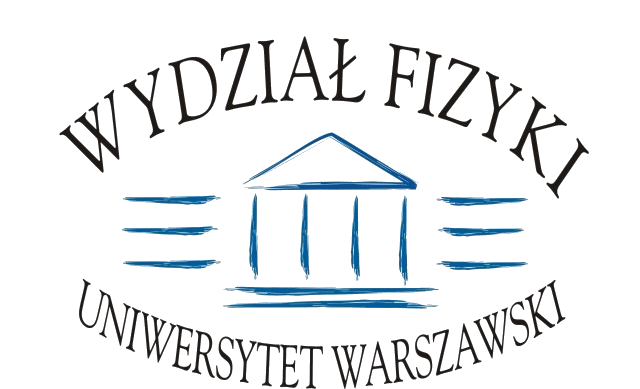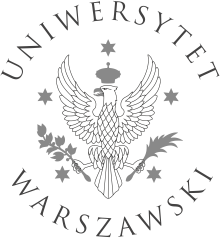Seminarium Kosmologia i Fizyka Cząstek
2006/2007 | 2007/2008 | 2008/2009 | 2009/2010 | 2010/2011 | 2011/2012 | 2012/2013 | 2013/2014 | 2014/2015 | 2015/2016 | 2016/2017
2015-12-01 (Wtorek)
Agnieszka Pollo (OA UJ, NCBJ)
VIPERS: a 3D web of 90,000 galaxies at z ~ 1
2015-11-24 (Wtorek)
George Zoupanos (National Technical University, Athens)
Higher-Dimensional Unification with continuous and fuzzy coset spaces as extra dimensions
We first review the Coset Space Dimensional Reduction (CSDR) programme and present the best model constructed so far based on the N = 1, 10-dimensional E_8 gauge theory reduced over the nearly-Kaehler manifold SU(3)=U(1)xU(1) with the additional use of the Wilsonflux mechanism. Then we present the corresponding programme in the case that the extra dimensions are considered to be fuzzy coset spaces, and the best model that has been constructed in this framework too. In both cases the best model appears to be the trinification GUT SU(3)^3.
2015-11-17 (Wtorek)
Stephan J. Huber (Univeristy of Sussex)
The status of the electroweak phase transition before LHC13
I will give a status report of electroweak baryogenesis and the electroweak phase transition in popular extensions of the Standard Model, after the first LHC run. In the final part of the talk I will discuss a possible gravitational wave signal from the phase transition.
2015-11-10 (Wtorek)
Andrzej Rostworowski (Jagiellonian University)
Current status of AdS instability
I will discuss the evidence that has been built up for the instability of anti-de Sitter (AdS) space-time against black hole formation under arbitrarily small generic perturbations together with the class of asymptotically AdS solutions immune to this instability, in particular, a class of stable time-periodic solutions of the Einstein equations allowed by the negative value of cosmological constant.
2015-11-03 (Wtorek)
Janusz Gluza (University of Silesia in Katowice)
LFV and Dirac-ness of massive neutrinos composed of Majorana states
Majorana neutrinos lead naturally to the Lepton Flavour Violation (LFV). A superposition of Majorana states can mimic Dirac-type of neutrinos,leading to recovery of the Lepton Flavour Conservation (LFC). A strength of LFV is a measurable quantity, which in turn gives correlations among Majorana neutrino parameters at the level of mixing or mass matrices, thus revealing possible details of neutrino mass generation mechanism (e.g. see-saw type-I versus inverse see-saw). As far as TeV massive neutrinos are concerned, which are searched presently at the LHC, an example of possible heavy neutrino sector parametrization is discussed which is in agreement with low energy stringent LFV processes. This parametrization goes beyond simplified ATLAS and CMS analysis done so far and is proposed as a next step in direction of more complete future LHC searching analysis.
2015-10-27 (Wtorek)
Michał Ostrowski (Astronomical Observatory, Jagiellonian University)
VHE gamma ray astrophysics and a Polish contribution to the CTA project
Exploring the Universe in the Very High Energy (100 GeV - 100 TeV) gamma rays is a relatively new research field of astrophysics, of importance for fundamental physics and cosmology also. The most efficient tool to study VHE gamma rays are Imaging Arrays of Cherenkov Telescopes (IACT) situated on earth. In the talk I will present a short review of selected results obtained by existing arrays, in particular by the H.E.S.S. experiment operated with Polish contribution in Namibia. Then, I will shortly present a current status of the Cherenkov Telescope Array (CTA) project and a progress with main Polish instrumental contributions to it: the small Cherenkov telescope SST-1M, composite mirror development for the medium size telescope MST and the CTA Science Gateway software development.
2015-10-20 (Wtorek)
Marco Cirelli (Institut de Physique Theorique - CNRS & CEA Saclay)
Indirect Detection amid hints and constraints: the troubled story of the Galactic Center GeV excess
2015-10-13 (Wtorek)
Elżbieta Richter-Was (Uniwersytet Jagielloński)
Physics at LHC: Selected results from EW sector and news on Run II
2015-10-06 (Wtorek)
Ulrich Nierste (Institute for Theoretical Particle Physics, Karlsruhe)
CP asymmetries in Bd,s decays to charmonium
The time-dependent CP asymmetry in Bd → J/ΨKs is the key quantity to determine the angle β of the unitarity triangle. The decay amplitude involves a penguin diagram with an up-quark loop, which obscures the relation between the measured CP asymmetry and β. While this "penguin pollution"was considered smaller than the experimental error of the measurements at past B factories, it matters for the precision a LHCb and Belle II. I present new calculations of the penguin pollution in Bd and Bs decays to charmonium, discussing also Bs → J/Ψ φ which is studied at LHCb to
Stron 3 z 3






